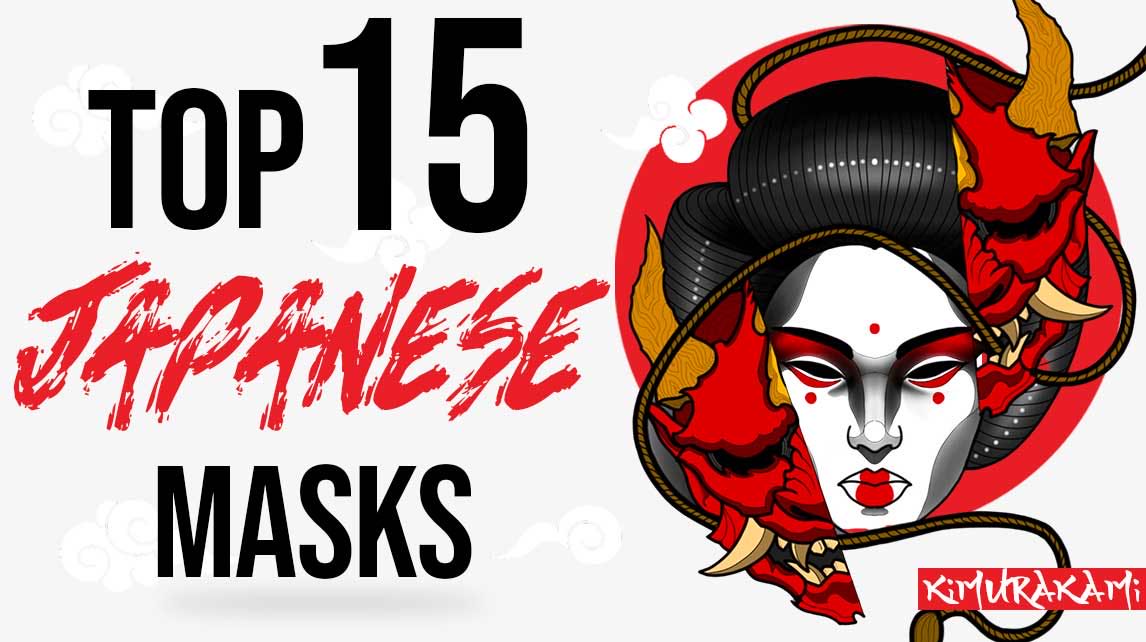Have you ever heard of Cyberpunk? You may be familiar with the term if you are fond of futuristic Japanese manga...
Cyberpunk style refers to a subgenre of science fiction that originated in the 1980s. It often describes a society dominated by technology (cybernetics and computers) capitalism and crime.
Like the kawaii movement and the streetwear style a real Japanese subculture has stemmed from this genre. Today, cyberpunk is associated with a post-modern culture.
The cyberpunk is also an individual who often takes a rebellious or anarchistic, individualistic, and computer-savvy attitude.
If this still isn't clear enough? I invite you to continue reading this article to learn more about this singular culture that revolutionized science fiction and read into the future of humanity and technology with amazing clarity.
Discover in this blog post:
- What constitutes the cyberpunk genre
- The origins and history of the cyberpunk trend
- In what forms cyberculture manifests itself in the land of the rising sun and around the world
Prepare to immerse your mind in the cybernetic matrix...
Cyberpunk story

The cyberpunk genre throws us into a dark vision of a (near) future where society far from being made better by technology falls into decadence. We witness a robotic dehumanization of the human race.
Low life High Tech
In the cyberpunk world, technology has turned man into cyborg. Cybernetic modifications are commonplace. Most people have bionic prosthetics, chips embedded in the brain that boost their mental abilities. The body has become something replaceable, something accommodating, and it is becoming difficult to distinguish man from machine.
But this technology that seems to improve the human race is the instrument of totalitarian control of large multinationals. These symbols of capitalism dictate and set the rules. Everyone, including governments, are mere puppets. This "Low Life High Tech" situation is perhaps the most representative feature of the genre.
Virtual Reality
Another major aspect of this genre is that of virtual reality and hyperconnectivity. William Gibson was the first to introduce the concept of a virtual world created from a network of computers and data in his Neuromancer work, before the Internet: Cyberspace...
A world that can be accessed by projecting one's mind directly into the data matrix. The cyberspace is often modeled on the real world, so that the line between virtual and real, fake and real, becomes thin. Cyberspace accentuates the idea of a world where technology has overtaken man. The reality of cyberspace is preferred to that of the real world and the body becomes a burden, a lifeless pile of flesh.
Cyberpunks, Cybercriminals
We are also immersed in a society where crime abounds. Criminal organizations sometimes linked to multinational corporations have power and influence. The cyberpunk characters often belong to this milieu: computer hacking, narco-trafficking, smuggling.
These anti-heroes often turn against the organizations that use their services and also try to control them. But they don't always manage to improve their status.
Through these rebellious and unsubmissive protagonists, the genre seems to embrace a nihilistic attitude to life. Similar characteristics found in the Punk culture, hence its assimilation to this genre
Cyberpunk and Postmodernism
Cyberpunk is also considered an important subgenre of postmodernist literature. Cyberpunk authors like so many others related to postmodernism write in an ironic, playful style with dark humor. Paradoxically, the subjects they deal with are serious, often political. They create new genres and styles by mixing those of authors from former eras. We will see below what mixture of genres gave birth to cyberpunk.
Inspirations, Influences and the Birth of the "Cyber" and "Punk" Movement

Although it is a subgenre of science fiction, cyberpunk also drew inspiration from several genres outside of science fiction.
The New Wave
The cyberpunk genre was greatly influenced by movements such as the New Wave of science fiction writers of the 1950s (Brian Aldiss, J.G. Ballard, Michael Moorcock). These predecessors dealt with themes related to environmental degradation, the urban environment, technology, crime, drug addiction and sexuality. Themes that are found at the heart of the cyberpunk genre.
Pre-Cyberpunk
Philip K. Dick and his work "Do Androids Dream of Electric Sheep" also had a very influential part in the development of Cyberpunk. It is with him that we find this almost apocalyptic dystopian atmosphere and the moral and ethical problems related to cybernetics and artificial intelligence that inspired authors like Gibson and Bruce Sterling.
Tough Crime Novel
The genre also borrows aspects from Hard-boiled detective fiction. The cyberpunk hero, like the hero of detective fiction, is often a lonely character who relies on his or her abilities (physical and intellectual) to get out of complicated situations.
Cyber + Punk
Cyberpunk is the combination of two words. "Cyber" refers to cybernetics, a science that compares the functioning of the human body and that of the machine. "Punk" refers to an urban culture and a rebellious attitude to the social order. From this combination comes a genre where characters often undergo cybernetic modifications and live marginalized, refusing to fit into the existing system.
Cyberpunks come into being
The term "Cyberpunk" was first used in 1983 by Bruce Bethke in the title of one of his short stories that appeared in an issue of Amazing Science-Fiction Stories magazine. It was then popularized, the following year, by Gardner D Rozois when he used it to refer to a group of authors who were precursors of a whole new genre: Bruce Sterling, William Gibson, Lewis Shiner, Pat Cadigan, and Greg Bear.
Gibson with his work Neuromancer played a founding role in the history of cyberpunk. We owe him concepts such as cyberspace, which is a true prediction of the Internet today. Other authors such as Sterling also play an important role. In his preface to the book Mirrorshades: A Cyberpunk Anthology, a collection of short stories written by several cyberpunk authors, he defines the foundations of the genre and the cyberculture.
The Punk Style

Other genre sub-varieties have arisen from cyberpunk, among these is solarpunk, which is a more optimistic vision of the future where renewable energy technology helps man make the earth a better place. Biopunk is a variety of cyberpunk characterized by the dominance of genetic modification technology. The steampunk usually takes place in a technological setting similar to the Industrial Revolution (Steam Engine) in a Victorian era. There are still a large number of "punk styles":
- Atompunk
- Biopunk
- Bronzepunk
- Clockpunk
- Dieselpunk
- Oceanpunk
- Ironpunk
- Desertpunk
- Lunarpunk
- Nowpunk
- Tupinipunk
Adaptations and Influences
The cyberpunk genre has seen a variety of adaptations: In movies, in games, in manga and comics. Cyberculture has also been influential in fashion, music and art in general.
Cyberpunk Film

The cyberpunk genre began as a literary genre and later developed into a film genre. It has had screen adaptations such as the one of Philip K. Dick's influential work, under the title Blade Runner in 1982. This was the very first one. Other achievements follow it like the cult film trilogy Matrix (1999) inspired by Simulacra and Simulation a book by Jean Baudrillard. Several other cinematic works fit into the cyberpunk genre:
- Blade Runner (Ridley Scott, 1982; re-adapted in 2017)
- Tron (Steven Lisberger, 1982 re-adaptation in 2010)
- RoboCop (Paul Verhoeven, 1987). This film was remade in 2014.
- Total Recall (Paul Verhoeven, 1990; a 2012 re-adaptation.)
- Hardware (Richard Stanley, 1990)
- Demolition Man (Marco Brambilla, 1993)
- Johnny Mnemonic (Robert Longo, 1995)
- Judge Dredd (Danny Cannon, 1995)
- Strange Days (Kathryn Bigelow, 1995)
- Nirvana (Gabriele Salvatores, 1996)
- The Fifth Element (Luc Besson, 1997)
- New Rose Hotel (Abel Ferrara, 1998)
- The Matrix trilogy (the Wachowskis, 1999)
- Avalon (Mamoru Oshii, 2001)
- Minority Report (Steven Spielberg, 2002)
- Cypher (Vincenzo Natali, 2002)
- Immortal, ad vitam (Enki Bilal, 2004)
- Babylon A.D (Mathieu Kassovitz, 2008)
- Chappie (Neill Blomkamp, 2015)
- Blade Runner 2049 (Denis Villeneuve, 2017)
- Alita: Battle Angel (Robert Rodriguez, 2018)
- Upgrade (Leigh Whannell, 2018)
Cyberpunk Comics
Cyberpunk (dark science fiction) qualities can be found in some comics. The Long Tomorrow by Moebius and Dan O'Bannon will be one of the inspirations for Gibson's Neuromancer and the Blade Runner film. Moebius would later appear in another work (The Incal) as part of a new collaboration with Alejandro Jodorowsky.
Frank Miller drew Rōnin at DC comics. The work, published at the same time as several major titles in the cyberpunk genre, has characteristics that are very similar to it. Notably, the telepathic faculties found in Akira
Cyberpunk Mangas and Anime

Although born in the United States, cyberpunk is not the exclusive domain of American authors. A Japanese cyberpunk emerges in 1982, the same year as Blade Runner, in manga with a first emblematic work: Akira, drawn by mangaka Katsukiro Omoto.
Akira will be adapted into anime in 1988 and like Blade Runner will be fundamental to the development of anime manga cyberpunk. Cowboy Bebop and Ghost in the Shell to name just a few of the most famous anime, are among the productions that Omoto's work inspired. He himself was inspired by Japanese punk culture. We can cite:
- Akira (Katsuhiro Ōtomo,1982; animated in 1988)
- Serial Experiments (Lain Ryutaro Nakamura, 1998)
- Bubblegum Crisis (1987)
- Silent Möbius (Kia Asamiya, 1989)
- Ergo Proxy (Shukō Murase, 2006)
- AD Police (Tony Takezaki, 1989)
- Gunnm (Yukito Kishiro,1990)
- Cyber City Oedo 808 (Yoshiaki Kawajiri,1990)
- Armitage III (1994)
- Ghost in the Shell (Masamune Shirow, 1989; adapted to anime in 1995 and to film in 2017)
- Eden (1998)
- BLAME! (Tsutomu Nihei, 1998)
- Metropolis (Rintarō, 2001)
- Appleseed (Masamune Shirow,1985)
- Mardock Scramble (Tow Ubukata, 2003)
- Texhnolyze (2003)
- Wonderful Days (Kim Moon-Saeng, 2003)
- Mardock Scramble (2010), based on the graphic novels by Tow Ubukata (2003)
- Vexille (2007)
- Accel World (2010 manga, animation in 2012)
- Psycho-Pass (2012)
Cyberpunk video games

The fascinating world of cyberpunk also appears in games. Players experience adventures taking place in typical genre settings. Thus, gadgets, bionic prostheses, adventures in cyberspace and conflict with multinationals or other controlling organizations are on the agenda. The Game Cyberpunk 2077 recently developed by CD Projekt Red and appeared on PC and console has been a great success despite some bugs.
- Cyberpunk 2013; Cyberpunk 2020; Cyberpunk Red (Role-Playing Games, R. Talsorian Games)
- GURPS: Cyberpunk (Steve Jackson Games; An anecdote about the game's design involves the U.S. Secret Service)
- Final Fantasy VII (Square Enix)
- Deus Ex: Human Revolution (Eidos Montreal, 2011)
- Shin Megami Tensei II (Atlus)
- System shock I & II (1994, 1999)
- Nomad Soul (1999)
- Devil Summoner: Soul Hackers
- Cyberpunk 2077 (CD Projekt Red)
Cyberpunk music
The musical atmosphere of cyberpunk genre films such as Blade Runner has been the inspiration for a musical genre referred to as cyberpunk. This genre is characterized by its synthesizer-produced tones and themes that often deal with a dark future and mechanized humanity. Several artists and music groups fall into this category or have already produced works that have cyberpunk traits:
- Afterworld (Siren, 2015)
- Cyberpunk (Billy Idol, 1993)
- Trinity (Laylow)
- Man-Machine (Gary Numan)
- Year Zero (Nine Inch Nails)
- Daydream Nation (David Bowie)
Cyberpunk art
Neon, often colored red/pink or bright blue combined with black to produce a futuristic glow is prominent in cyberpunk visual art. It also displays dark, underground spaces, mostly geometric shapes.
Architecturally, the cyberpunk milieu is dominated by tall gratels and precarious suburban areas. The Sony Center in Berlin is for some a true representation of a cyberpunk environment.
Cyberpunk clothing
Cyberpunk also refers to a fashion. Techwear is a style of clothing inspired by the genre and urban street fashion. The style often has an old and recycled look, practical and functional. It also uses gadgets or high tech accessories (glasses, gas mask). There is also the Cybergothic (cybergoth) style that combines the dark colors of the gothic style with the bright neon lights of cyberculture.
How to dress in cyberpunk
To respect the codes of cyberpunk fashion, it is imperative to wear clothes with futuristic, and avant-garde style. We think in particular of:
- Techwear
- The Japanese face mask
- The Japanese bombers (sukajan)
- To the Japanese Cargo pants
You can also complete your outfit with colorful and flashy accessories. Don't hesitate to put on a reflective jacket, translucent glasses or even a futuristic t-shirt to look like a real cyberpunk character...
Cyberpunk is now!

Today more than yesterday, in the 80s, the cyberpunk future is becoming a reality. Technology has evolved and is more integral to our lives than ever before. Few of us would know how to imagine life without our electrical and electronic devices (smartphones, computers, televisions etc...) They make our lives easier, make us more efficient, become more and more ergonomic every day thus reducing the distance between us... Like prostheses. So we are not so different from cyborgs.
Few of us could imagine going a single day without texting, posting and reacting to posts, tweets, comments, following the content of our favorite pages etc.. A good portion of our interactions take place on the Internet. The hyperconnectivity described in William Gibson's fiction is very real. For many of us, it has taken over real life. And it is as if their minds reside in this data matrix that is the internet, cyberspace.










Leave a comment